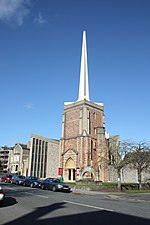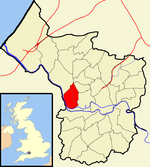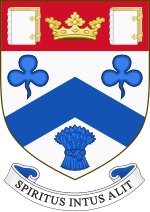Clifton Cathedral
Churches in Clifton, BristolGrade II* listed Roman Catholic churches in EnglandGrade II* listed cathedralsGrade II* listed churches in BristolMusic venues in Bristol ... and 6 more
Percy Thomas buildingsRoman Catholic Diocese of CliftonRoman Catholic cathedrals in EnglandRoman Catholic churches in BristolTourist attractions in BristolUse British English from September 2013

The Cathedral Church of SS. Peter and Paul is the Roman Catholic cathedral of the city of Bristol (not to be confused with the Church of England Bristol Cathedral). Located in the Clifton area of the city, it is the seat and mother church of the Diocese of Clifton and is known as Clifton Cathedral. It has been a Grade II* Listed Building since 2000. A 2014 study noted it to be the only Catholic church built in the 1970s to have been Grade II* listed. It was the first cathedral built under new guidelines arising from the Second Vatican Council.
Excerpt from the Wikipedia article Clifton Cathedral (License: CC BY-SA 3.0, Authors, Images).Clifton Cathedral
Clifton Park, Bristol Clifton
Geographical coordinates (GPS) Address Website External links Nearby Places Show on map
Geographical coordinates (GPS)
| Latitude | Longitude |
|---|---|
| N 51.4597 ° | E -2.6163 ° |
Address
Clifton Cathedral
Clifton Park
BS8 3BX Bristol, Clifton
England, United Kingdom
Open on Google Maps











